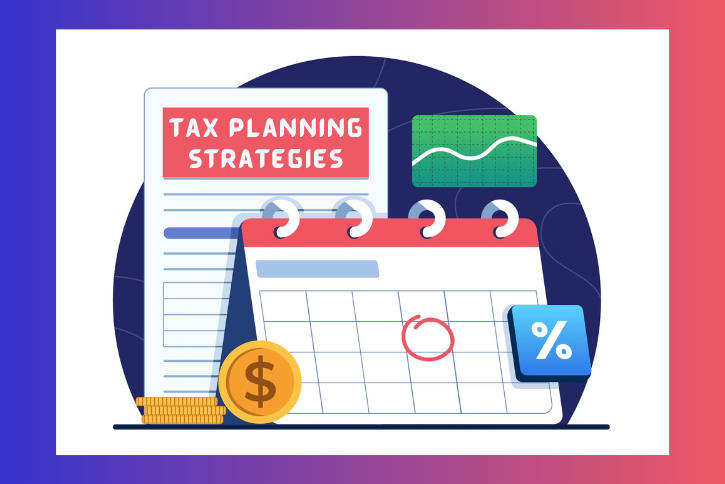As the old adage goes, "nothing is certain except death and taxes." While we can’t avoid taxes altogether, we can certainly take steps to minimize our tax liability through effective tax planning. Tax planning involves analyzing an individual’s or business’s financial situation to identify opportunities to reduce tax payments. In this article, we will explore various tax planning strategies that can help you save money and stay on top of your finances.

Understanding Tax Planning
Tax planning is an essential aspect of personal and business finance. It involves taking a proactive approach to managing your tax obligations, rather than simply waiting until the end of the year to file your tax return. By understanding the tax laws and regulations that apply to your situation, you can make informed decisions about how to structure your finances to minimize your tax liability.
Individual Tax Planning Strategies
There are several tax planning strategies that individuals can use to reduce their tax liability. Some of these include:
- Maximizing Retirement Contributions: Contributing to a retirement account, such as a 401(k) or IRA, can help reduce your taxable income. The money you contribute to these accounts is tax-deductible, and the funds grow tax-free until withdrawal.
- Utilizing Tax Credits: Tax credits can provide a dollar-for-dollar reduction in your tax liability. Some common tax credits include the Earned Income Tax Credit (EITC), the Child Tax Credit, and the Education Credit.
- Itemizing Deductions: Instead of taking the standard deduction, you may be able to itemize your deductions to reduce your taxable income. Common itemized deductions include mortgage interest, charitable donations, and medical expenses.
- Harvesting Investment Losses: If you have investments that have declined in value, you may be able to sell them to realize a loss and offset gains from other investments.
- Gifting Assets: Gifting assets to family members or charitable organizations can help reduce your taxable estate and minimize estate taxes.
Business Tax Planning Strategies
Business owners and entrepreneurs can also use tax planning strategies to reduce their tax liability. Some of these include:
- Entity Selection: Choosing the right business entity, such as a sole proprietorship, partnership, or corporation, can help minimize tax liability.
- Accounting Method Selection: Selecting the right accounting method, such as cash or accrual accounting, can help minimize tax liability.
- Depreciation and Amortization: Depreciating and amortizing assets, such as equipment and property, can help reduce taxable income.
- Employment Tax Planning: Hiring family members or using independent contractors can help reduce employment tax liability.
- Business Use of Your Home: If you use a dedicated space in your home for business purposes, you may be able to deduct a portion of your rent or mortgage interest as a business expense.
International Tax Planning Strategies
Individuals and businesses with international connections can use tax planning strategies to minimize their tax liability. Some of these include:
- Foreign Earned Income Exclusion: If you live and work abroad, you may be able to exclude a portion of your foreign-earned income from taxation.
- Foreign Tax Credits: If you pay taxes in a foreign country, you may be able to claim a foreign tax credit to reduce your US tax liability.
- Transfer Pricing: Businesses with international transactions can use transfer pricing strategies to minimize tax liability.
- International Tax Treaties: Understanding international tax treaties can help individuals and businesses navigate complex tax laws and minimize tax liability.
Frequently Asked Questions (FAQs)
- What is tax planning?
Tax planning involves analyzing an individual’s or business’s financial situation to identify opportunities to reduce tax payments. - Why is tax planning important?
Tax planning is essential to minimize tax liability, maximize savings, and ensure compliance with tax laws and regulations. - What are some common tax planning strategies for individuals?
Common tax planning strategies for individuals include maximizing retirement contributions, utilizing tax credits, itemizing deductions, harvesting investment losses, and gifting assets. - What are some common tax planning strategies for businesses?
Common tax planning strategies for businesses include entity selection, accounting method selection, depreciation and amortization, employment tax planning, and business use of your home. - How can I get started with tax planning?
To get started with tax planning, you should consult with a tax professional, gather financial documents, and identify areas for tax savings.
Conclusion
Tax planning is an essential aspect of personal and business finance. By understanding the tax laws and regulations that apply to your situation, you can make informed decisions about how to structure your finances to minimize your tax liability. Whether you are an individual or a business owner, there are many tax planning strategies available to help you save money and stay on top of your finances. Remember to consult with a tax professional, gather financial documents, and identify areas for tax savings to get started with tax planning. With the right tax planning strategies in place, you can minimize your tax liability, maximize your savings, and achieve financial peace of mind.
Closure
Thus, we hope this article has provided valuable insights into Tax Planning Strategies: A Comprehensive Guide. We appreciate your attention to our article. See you in our next article!